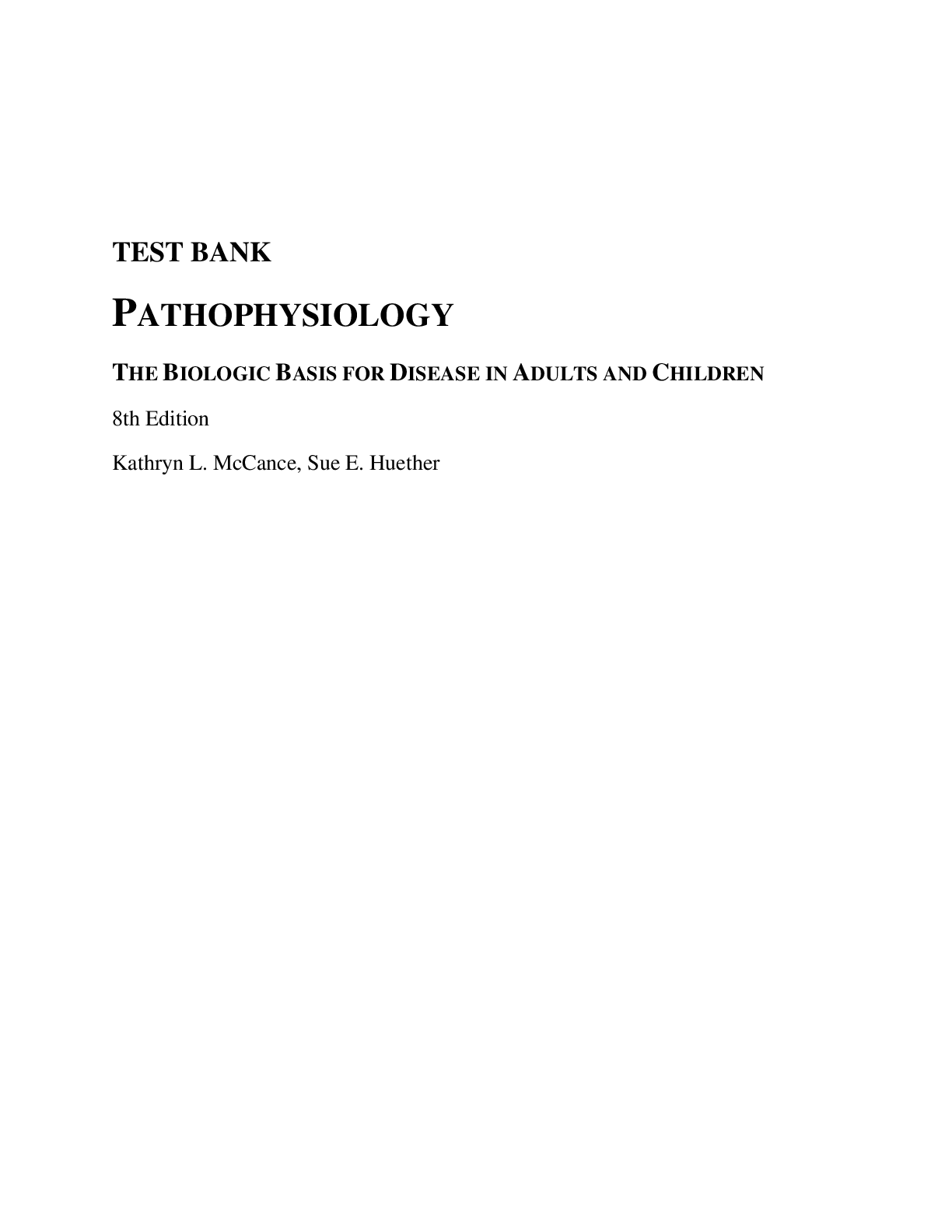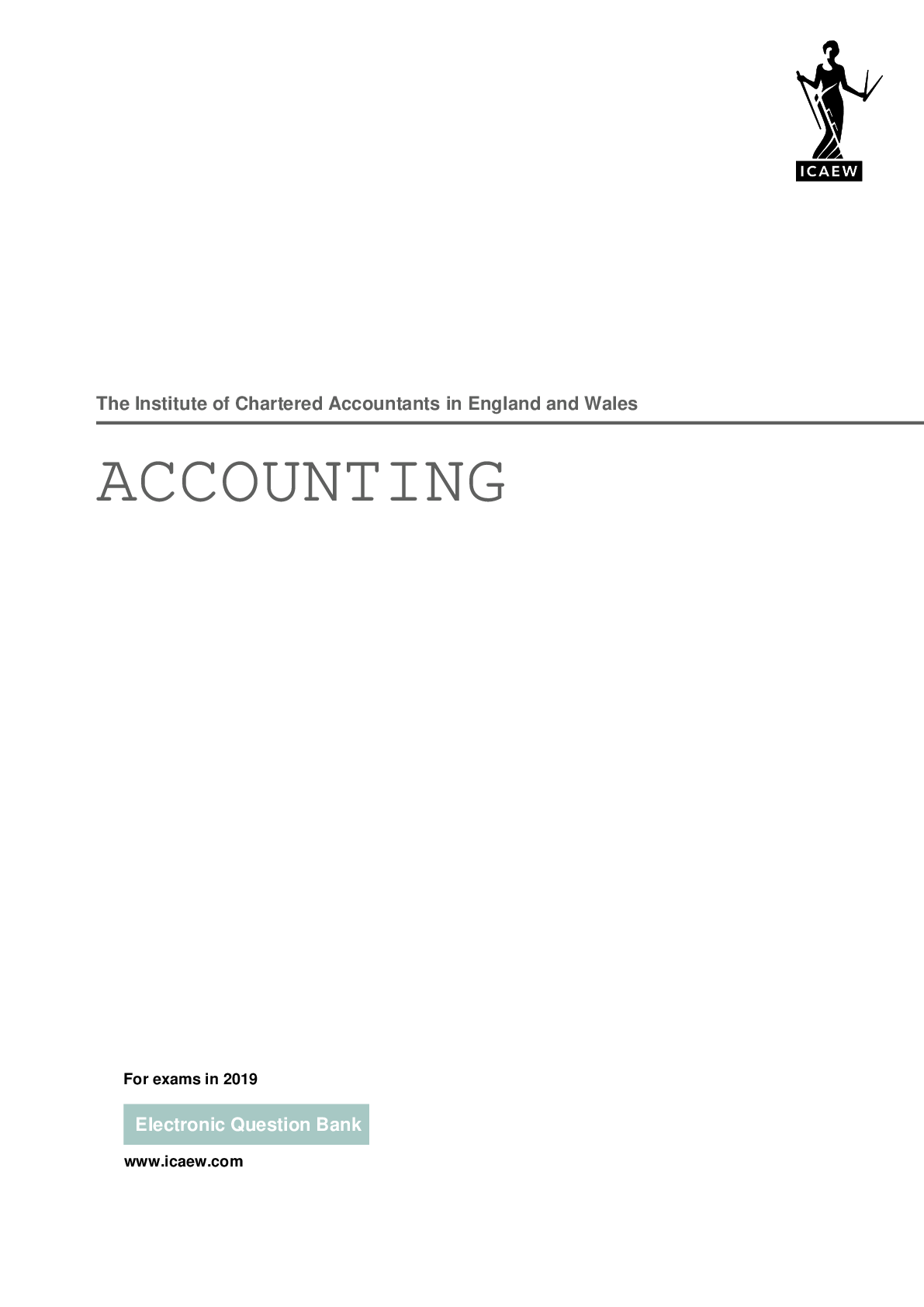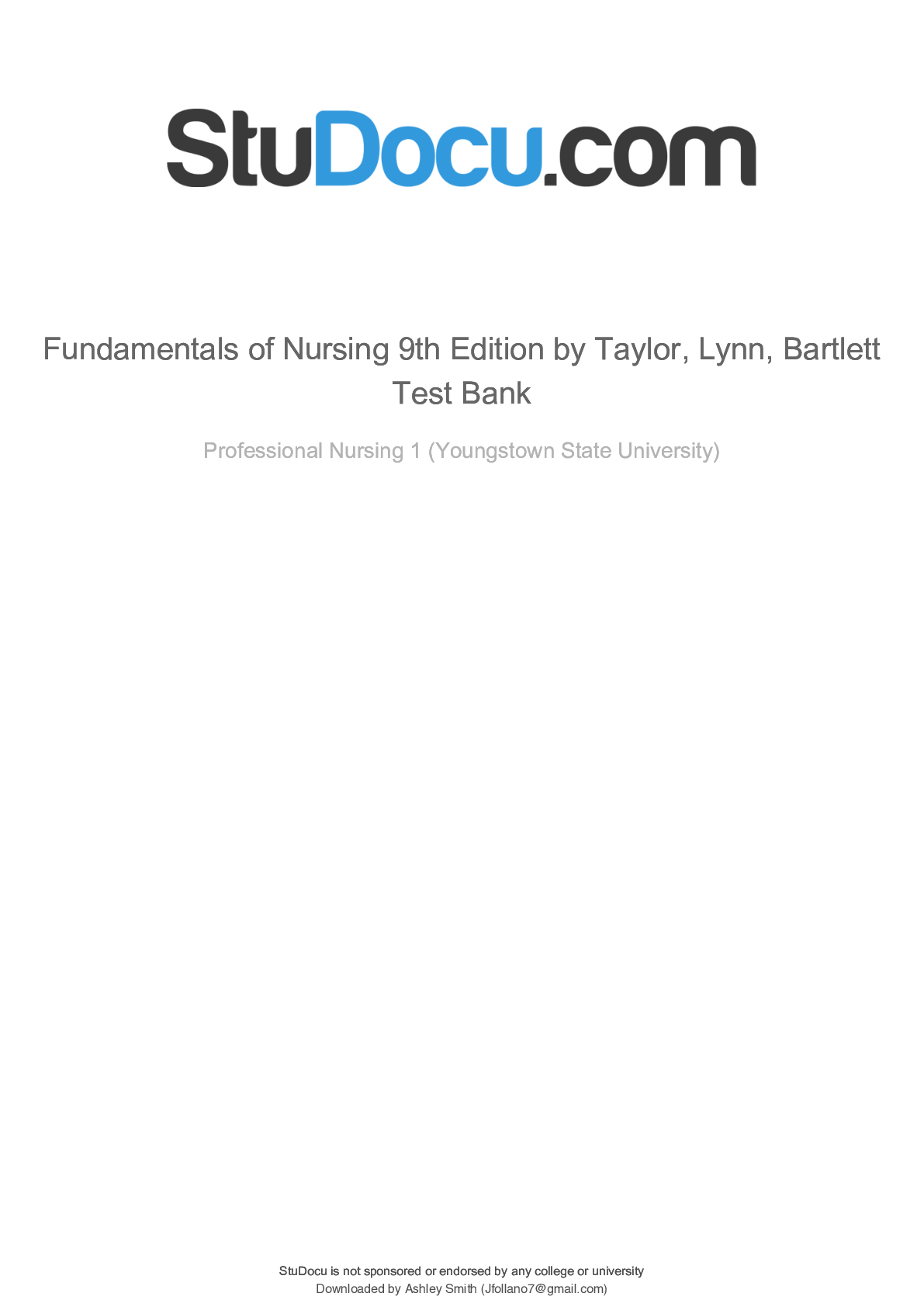Chemistry > TEST BANKS > 336684792-Test-Bank-of-Organic-Chemistry-4th-Editin-By-Janice-Smith (All)
336684792-Test-Bank-of-Organic-Chemistry-4th-Editin-By-Janice-Smith
Document Content and Description Below
Test Bank of Organic Chemistry 4th Edition By Janice Smith For Order This And Any Other Course, Assignments, Discussions, Quizzes, Exams, Test Banks And Solutions Manuals Contact us At whiperhill... s@gmail.com Or Visit Our website ACEHOMEWORK.NET Chapter 1: Structure and Bonding 1. What is the ground-state electronic configuration of a carbon atom? A) 1s2, 2s2, 2p5 B) 1s2, 2s2, 2p2 C) 1s2, 2s2, 2p6 D) 1s2, 2s2, 2p4 2. What is the ground-state electronic configuration of a fluorine atom? A) 1s2, 2s2, 2p2 B) 1s2, 2s2, 2p3 C) 1s2, 2s2, 2p4 D) 1s2, 2s2, 2p5 3. What is the ground-state electronic configuration of a magnesium cation (Mg2+)? A) 1s2, 2s2, 2p6 C) 1s2, 2s2, 2p6, 3s2 B) 1s2, 2s2, 2p6, 3s1 D) 1s2, 2s2, 2p6, 3s2, 3p2 4. What is the ground-state electronic configuration of a chlorine anion (Cl—)? A) 1s2, 2s2, 2p6 C) 1s2, 2s2, 2p6, 3s2, 3p5 B) 1s2, 2s2, 2p6, 3s2, 3p6 D) 1s2, 2s2, 2p6, 3s2, 3p4 5. Which of the following statements about valence electrons is true? A) They are the most tightly held electrons. B) They do not participate in chemical reactions. Page 1Chapter 1: Structure and Bonding C) They are the outermost electrons. D) They reveal the period number of a second-row element. 6. Which of the following statements about bonding is true? A) Covalent bonds result from the transfer of electrons from one element to another. B) Ionic bonds result from the transfer of electrons from a metal to a non-metal. C) Ionic bonds result from the sharing of electrons between two non-metals. D) Covalent bonds result from the sharing of electrons between two metals. 7. Which of the following would you expect to have ionic bonds? A) CO B) FBr C) NF3 D) NaCl 8. Which of the following molecules has nonpolar covalent bonds? A) HCl B) N2 C) CHCl3 D) NO 9. Which of the following molecules contain both covalent and ionic bonds? A) I, II B) I, IV C) II, III D) II, IV 10. Arrange the following bonds in decreasing order of ionic character, putting the most ionic first. A) I > II > III > IV C) IV > III > II > I B) IV > II > I > III D) IV > II > III > I 11. Which of the following statements correctly describes the typical number of bonds for carbon, nitrogen, and oxygen in most neutral organic molecules? A) Carbon forms 4 covalent bonds, nitrogen forms 2 covalent bonds and oxygen forms 3 covalent bonds. B) Carbon forms 4 covalent bonds, nitrogen forms 3 covalent bonds and oxygen forms 2 covalent bonds. Page 2Chapter 1: Structure and Bonding C) Carbon forms 4 covalent bonds, nitrogen forms 5 covalent bonds and oxygen forms 2 covalent bonds. D) Carbon forms 4 covalent bonds, nitrogen forms 5 covalent bonds and oxygen forms 4 covalent bonds. 12. Which is not an acceptable Lewis structure for the anion CH2NCO—? A) I B) II C) III D) IV 13. Which of the following Lewis structures is correct? A) I B) II C) III D) IV 14. Which of the following Lewis structur [Show More]
Last updated: 2 years ago
Preview 1 out of 347 pages

Buy this document to get the full access instantly
Instant Download Access after purchase
Buy NowInstant download
We Accept:

Reviews( 0 )
$10.00
Can't find what you want? Try our AI powered Search
Document information
Connected school, study & course
About the document
Uploaded On
Mar 15, 2021
Number of pages
347
Written in
Additional information
This document has been written for:
Uploaded
Mar 15, 2021
Downloads
1
Views
183


























